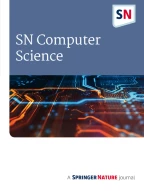Abstract
Alzheimer's disease (AD) is a neurological disease that affect numerous people. According to the literature, forecasting this type of disease can be an extremely difficult process. Machine Learning and Artificial Intelligence play a significant part in healthcare and other relevant fields. Deep Learning prediction model can be used by taking into consideration the basic principles of Machine Learning and Deep Learning algorithm. There are wide range of feature selection and medical image preprocessing approaches, and applied multiple classification algorithms to the datasets to determine which methods produced the best results. This paper proposes by considering Convolutional Neural network and Support vector machine as a base for classification and evaluated the model using a variety of methodologies to obtain the best possible outcome. That is considerably more effective than prior work in the same field.
Similar content being viewed by others
Explore related subjects
Discover the latest articles, news and stories from top researchers in related subjects.Data Availability
Upon reasonable request, the dataset utilized and examined in this study can be acquired from the corresponding author.
References
Vinet L, Zhedanov A. A ‘missing’ family of classical orthogonal polynomials. J Phys A Math Theor. 2011;44(8):59–65. https://doi.org/10.1088/1751-8113/44/8/085201.
Brackey J. Creating the moments of JOY. West Lafayette: Purdue University Press; 1390.
Dougherty G. Digital image processing for medical application, vol. 4, no. 1. 2009.
Alzheimer’s Disease—An Overview_myALZteam.
Liu L, Zhao S, Chen H, Wang A. A new machine learning method for identifying Alzheimer’s disease. Simul Model Pract Theory. 2019. https://doi.org/10.1016/j.simpat.2019.102023.
Albright J. Forecasting the progression of Alzheimer’s disease using neural networks and a novel preprocessing algorithm. Alzheimer’s Dement Transl Res Clin Interv. 2019;5:483–91. https://doi.org/10.1016/j.trci.2019.07.001.
Shahbaz M, Ali S, Guergachi A, Niazi A, Umer A. Classification of Alzheimer’s disease using machine learning techniques. In: DATA 2019—Proc. 8th Int. Conf. Data Sci. Technol. Appl. 2019. p. 296–303. https://doi.org/10.5220/0007949902960303.
Nori VS, et al. Machine learning models to predict onset of dementia: a label learning approach. Alzheimer’s Dement Transl Res Clin Interv. 2019;5:918–25. https://doi.org/10.1016/j.trci.2019.10.006.
Ghoraani B, Boettcher LN, Hssayeni MD, Rosenfeld A, Tolea MI, Galvin JE. Biomedical signal processing and control detection of mild cognitive impairment and Alzheimer’ s disease using dual-task gait assessments and machine learning. Biomed Signal Process Control. 2021;64(2020):102249. https://doi.org/10.1016/j.bspc.2020.102249.
Zheng Y, Guo H, Zhang L, Wu J, Li Q, Lv F. Machine learning-based framework for differential diagnosis between vascular dementia and Alzheimer’ s disease using structural MRI features. Front Neurol. 2019;10:1–9. https://doi.org/10.3389/fneur.2019.01097.
Forouzannezhad P, et al. A Gaussian-based model for early detection of mild cognitive impairment using multimodal neuroimaging. J Neurosci Methods. 2019. https://doi.org/10.1016/j.jneumeth.2019.108544.
Kruthika KR, Rajeswari MH. Multistage classifier-based approach for Alzheimer’s disease prediction and retrieval. Inform Med Unlocked. 2019;14:34–42. https://doi.org/10.1016/j.imu.2018.12.003.
Zhang Y, Brady M, Smith S. Segmentation of brain MR images through a hidden Markov random field model and the expectation-maximization algorithm. IEEE Trans Med Imaging. 2001;20(1):45–57. https://doi.org/10.1109/42.906424.
Jenkinson M, Bannister P, Brady M, Smith S. Improved optimization for the robust and accurate linear registration and motion correction of brain images. Neuroimage. 2002;17(2):825–41. https://doi.org/10.1006/nimg.2002.1132.
Jenkinson SSM, Pechaud M. BET2: MR-based estimation of brain, skull and scalp surfaces. In: Eleventh annual meeting of the organization for human brain mapping. 2005.
Whitcher B, Schmid VJ, Thornton A. Working with the DICOM and NIfTI data standards in R. J Stat Softw. 2011;44(6):1–29. https://doi.org/10.18637/jss.v044.i06.
Czum JM. Dive into deep learning. J Am Coll Radiol. 2020;17(5):637–8. https://doi.org/10.1016/j.jacr.2020.02.005.
Patterson J, Gibson A. Deep learning a practioner’s approach, vol. 53, no. 9. (2019).
Albon C. Machine learning with python cookbook practical solutions from preprocessing to deep learning. 2018.
Géron A. Hands-on machine learning with Scikit-Learn, Keras and TensorFlow. Sebastopol: O’Reilly Media, Inc.; 2019.
Abed J, Maalouf N, Manson AL, Earl AM, Parhi L, Emgård JEM, et al. Colon cancer-associated fusobacterium nucleatum may originate from the oral cavity and reach colon tumors via the circulatory system. Front Cell Infect. Microbiol. 2020;10(400). https://doi.org/10.3389/fcimb.2020.00400
Du Y, Fu Z, Sui J, Gao S, Xing Y, Lin D, Salman M, Abrol A, Rahaman MA, Chen J, Hong LE, Kochunov P, Osuch EA, Calhoun VD. NeuroMark: an automated and adaptive ICA based pipeline to identify reproducible fMRI markers of brain disorders NeuroImage Clin. 2020;28. https://doi.org/10.1016/j.nicl.2020.102375
Bae JB, Lee S, Jung W, et al. Identification of Alzheimer's disease using a convolutional neural network model based on T1-weighted magnetic resonance imaging. Sci Rep. 2020;10:22252. https://doi.org/10.1038/s41598-020-79243-9.
Acknowledgements
The authors acknowledged the St Aloysius College (Autonomous), Mangaluru, India and Srinivas Institute of Technology, Mangaluru, India. for supporting the research work by providing the facilities.
Funding
No funding received for this research.
Author information
Authors and Affiliations
Contributions
The success of this research endeavour is attributed to the collaborative efforts and valuable contributions of all authors involved.
Corresponding author
Ethics declarations
Conflict of Interest
No conflict of interest.
Additional information
Publisher's Note
Springer Nature remains neutral with regard to jurisdictional claims in published maps and institutional affiliations.
Rights and permissions
Springer Nature or its licensor (e.g. a society or other partner) holds exclusive rights to this article under a publishing agreement with the author(s) or other rightsholder(s); author self-archiving of the accepted manuscript version of this article is solely governed by the terms of such publishing agreement and applicable law.
About this article
Cite this article
Yashodhar, A., Kini, S. Classification and Feature Selection of Alzheimer’s Disease for MRI Data Utilizing Convolutional Neural Network and Support Vector Machine. SN COMPUT. SCI. 5, 707 (2024). https://doi.org/10.1007/s42979-024-03019-5
Received:
Accepted:
Published:
DOI: https://doi.org/10.1007/s42979-024-03019-5
